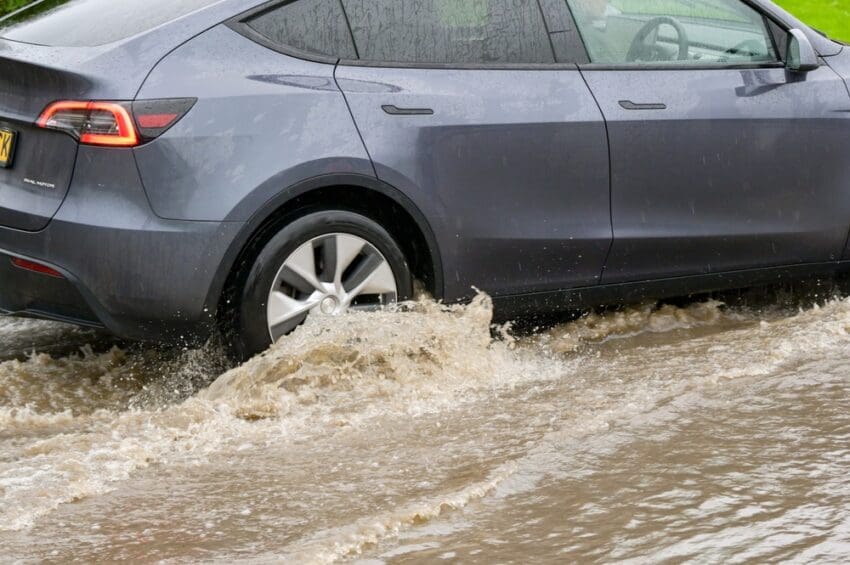
Can I drive an EV in a flood? What to know about electric cars and bad weather
Advice on safely driving and charging an electric car during stormy weather
Autumn is properly here and, along with pumpkin spiced lattes, it brings a real downturn in the weather.
Summer’s dry sunny days are gone and high winds and heavy rain are here to stay, with the associated risks of storms and floods.
One of the most common questions around EVs is whether it’s safe to drive an electric car during a flood or storm. So we’re here to address that and offer some advice on how to stay safe on the roads during bad weather.
Can I drive an EV through a flood?
The rules for driving an EV through a flood or during a storm are exactly the same as for any other type of car.
The general advice is to avoid driving through flood water at all. However, sometimes you may be faced with no choice. In these circumstances, an EV is just as safe as a petrol or diesel car.
Like any car, all EVs must meet strict safety standards and these include protection from water, dirt and other contaminants. Any electrical component is sealed and insulated to ensure that water, even from deep puddles, cannot cause problems.

While an EV’s battery is usually mounted in the floor, it is protected from outside elements by an electrically isolated exterior surface and sealed against any water getting in. The motors and high-voltage cables connecting them to the battery are also heavily insulated and protected against any water ingress.
Should the worst happen and water make contact with any high-voltage element, EVs feature failsafes to shut down and isolated components if they suffer any damage. So an EV is perfectly safe to drive through even deep puddles.
How to drive an EV through flood water
As mentioned, the best advice is to avoid driving your EV through flood water or deep puddles but if you must, you should follow some basic safety precautions.
First, check the depth of the water. According to the AA, just a foot of moving water (30cm) is enough to float a car. Two feet (60cm) of standing water is enough to do the same. The AA recommends that you shouldn’t drive through anything more than four inches (10cm) deep. As well as the risk of your EV being washed away, deep water can hide obstacles that could damage your car.

If you think it’s safe, try to drive down the centre of the road, known as the crown. This should be the highest point of the road and, therefore, where the water is shallowest.
Drive slowly. An EV isn’t at risk of engine flooding like a petrol or diesel car but a slow and steady pace will help you maintain control and avoid causing a bow wave that could affect other vehicles.
Once you’re clear of the water, dry your brakes. Apply them gently a few times while driving slowly to remove the water. This is particularly important in an EV where braking regeneration may mean you don’t use the friction brakes as frequently.
Can I charge my EV during a storm or heavy rain?
Yes. Like the cars themselves, EV chargers are designed and built to withstand bad, even extreme weather.
Any home wallbox or public charging station will be fully sealed against wind and rain and feature failsafes that cut the power should anything go wrong.
It is important, however, to make sure any charging equipment is in good condition before using it. Check cables and wallbox casings are free from damage and, if in any doubt, don’t use it.





